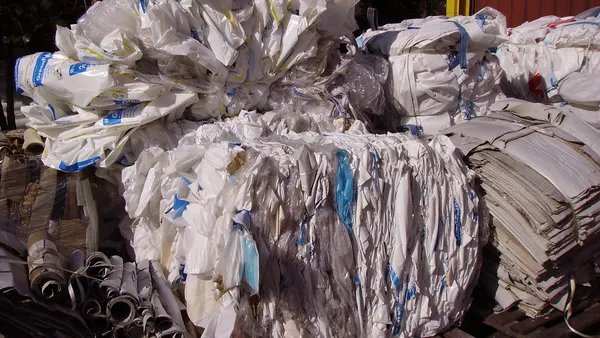Dive Brief:
- Since issuing a "snow alert" on Monday night, New York's Department of Sanitation (DSNY) has been working around the clock to keep the city running after Winter Storm Stella. This has involved 2,400 employees working 12-hour shifts to operate an estimated 2,200 pieces of equipment.
- DSNY still had 530 plows and 644 salt spreaders working on Wednesday, as reported by DNA Info. The department also hired 557 per diem snow laborers to help shovel out crosswalks, bus stops and fire hydrants.
- While snow accumulations was lower than expected, DSNY told Waste Dive that icy conditions and cold temperatures present a different challenge. They are using more salt to address these conditions and will continue to do so until temperatures rise.
Dive Insight:
According to the National Weather Service, New York only saw about 8 inches of snow at most — far less than predicted — but that doesn't change the many factors involved with clearing the city's 6,300 miles of streets. Plows must still be connected to collection trucks, salt spreaders must be filled and tire chains must be attached. While the shift may be tiring, the overtime earned on these shifts can be very lucrative for collection workers.
Extended hours are likely to continue this week as crews work to catch up on multiple days of accumulated waste and recyclables. The city told residents via 311, online messages and social media that collections had been suspended on Monday night, though that message may not have reached everyone. Digging frozen bags out of snowbanks, or climbing over them to get new bags in icy conditions, will make collections especially challenging.
The city comptroller's office has estimated that it costs $1.99 million to clear each inch of snow and some reports have questioned whether it would make more sense for the city to diversify its snow removal operations, possibly by using private contractors. Other cities regularly contract out their collection service, making it easier to focus on snow, while others take the opposite approach. Striking the right balance between standard operations and snow removal is difficult for cities throughout the Northeast, with little patience for delay. Storms of any size are yet another example of the key role that sanitation and public works crews play in keeping their cities running after all types of events.










